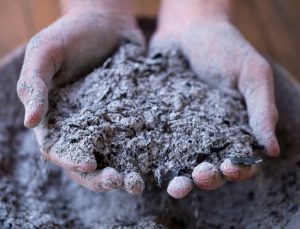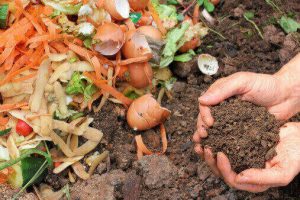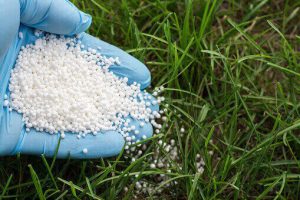We are quick to blame the changing weather and plant-related diseases for the sickly yellowing of plant leaves or their stalled growth. The real problem could be lying underneath the plant. The slight increase or decrease in the acidity of soil could affect plant growth. A basic understanding of pH will help to counter deficiencies in the soil.
If you ask any soil fertility expert, they will suggest that changing the pH level of the soil to bring it in an appropriate condition is essential before you start fertilizing the soil for planting.
You can determine the acidity of soil by doing a simple soil pH test. After confirming the soil condition, you can consider soil amendments; either increasing or decreasing acidity.
Before learning how to alter the soil pH level, we must understand how the soil becomes acidic or alkaline and how to properly test soil pH to get an accurate reading.
How does Acidity Increases or Decreases in the soil?
There are many reasons for soil to become highly acidic. Naturally, the soil becomes acidic because of its parent material and the amount of rainfall it receives. The other major reason for soil to become acidic is when it’s fertilized continuously.
- Soils developed from basic rocks generally have higher pH (alkaline) values than those formed from acid rocks. Water passing through the soil takes away basic nutrient availability such as calcium and magnesium from the soils, which are replaced by acidic elements like aluminum and iron.
- Soil pH is also affected by land use and management. The vegetation in the area also impacts the soil pH level. For example, areas of forestland and sandy soil tend to be more acidic than areas of grassland. Conversion of forested land to the agricultural field can also raise the acid level of the soil.
- Application of chemical fertilizers containing ammonium or urea speeds up the rate at which acidity develops in the soil. The decomposition of organic matter also contributes to soil acidity.
- Soil solutions with high clay and organic matter content are more able to resist a drop or rise in pH.
- Most garden soil and plants enjoy slightly acidic conditions with a pH of about 6.5. Pin oak, gardenia, blueberry, azalea, and rhododendron are a few examples. The specific plant growth or crop growth can leave the soil acidic.
- Some of the common reasons why the soil loses acidity and becomes more alkaline are due to over-liming conditions. Here are some of the major reasons for the soil sample to become alkaline.
- Irrigating with alkaline waters can also raise the level of alkalify in the soil.
- Alkaline soils are primarily caused by calcium carbonate-rich parent material weathering (developing) in an arid or dry environment. Soil formed from basic rocks is alkaline in nature.
- Alkaline soil contains excessive amounts of sodium, calcium, and magnesium. It is often called “sweet soil.”
- Alkaline soil becomes less water-soluble and has trouble absorbing plant nutrients. It also affects the plant’s roots by absorbing nutrients.
- Areas that receive little rainfall or that are quenched with “hard water” can become alkaline over time.
- The soil pH level remains anywhere around 8-14 on the pH scale.
How to properly test Soil pH Levels?
Before adjusting the soil pH level, you must test the soil for acidity or alkalinity. Although there are various ways to test soil pH, the most reliable way is to use certified soil test kits.
Before soil testing, you must determine what soil type you have. Well-drained and loose soil can easily be altered. On the other hand, compacted earth has a lot of clay soil in it which is difficult to change.
You can test your soil at home with three different types of soil pH testers
Chemical Colored Dyes – Chemical colored dyes are combined with the soil-water mixture. The reading is obtained through the resulting color.
pH Test Strips –pH Test Strips are an advanced version of litmus paper but they are more accurate than chemical colored dyes.

Electronic Soil pH Meters –Electronic soil pH Meters are garden-quality tools to measure the accurate reading of soil pH. All you’d need to do is insert the probe attached to the meter inside the soil sample and read the testing. Soil pH meter is an effective electronic pH tool that reads the soil pH with the help of a voltmeter.

The scale of the soil pH test goes from 0 to 14 where pH 7 indicates neutral soil. It is a ‘reverse’ scale, i.e. soil with acids or organic acid has a low pH and a high hydrogen ion concentration. Therefore, at high alkaline pH values, the hydrogen ion concentration is low.
From pH 7 to 0, the soil is considered acid soil, and pH 7 to 4 is considered alkaline or basic. You may get readings like 5.0 – 5.5 which indicates acid soil. If you get over 7, it means the soil is alkaline. Most plants enjoy a soil pH level between 5 – 7.
How to Increase the Soil pH Level?
An increase in soil pH refers to making the soil less acidic. The common amendments include applying materials and chemical that contains some form of agricultural lime or calcium carbonate. The soil texture, organic matter, existing plants, and weather conditions may affect the time it will take to make soil alkaline.
Here are some of the proven ways to increase soil pH.
Selecting a Liming Material
You can choose from four types of ground liming material: pulverized, granular, pelletized, and hydrated. The finer the grind of the limestone the faster it will change the soil pH.
Time of application and lime requirement
The lime needs should be determined by a soil test. The soil testing sample can indicate if there is a need for limestone. The experts suggest that calcium carbonate should be applied two to three months prior to planting to allow time for it to neutralize the soil acidity.
The maximum contact of lime with the soil is essential to expedite the liming material process. Moisture is essential for lime to properly react with soil.
Wood Ashes

Wood ashes are organic matters that can be used to raise the soil pH level. They contain fairly high amounts of potassium and calcium carbonate, and small proportions of phosphate, boron, and other elements. You should be careful that the wood ashes don’t come in contact with germinating seedlings or plant roots as they can burn the seedlings.
How to Decrease the Soil pH Level?
Decreasing the soil pH refers to making the soil less alkaline. The soil’s parent material, tap water, and environmental condition can make soil alkaline over time. Most plants prefer soil pH values between 5 – 7.
Here are some of the proven amendments to decrease soil pH levels.
Use Organic Materials
The decomposition of organic matter also contributes to soil acidity. Over time, organic matters from pine needles, compost, and manure can help lower soil pH levels. People who chose to do organic gardening can rely on organic materials.

Organic matter can also help in improving soil drainage and aeration.
As organic matter takes time to break, using organic material remains best for small lawns and potted plants.
Consider Applying Aluminum Sulfate and Sulfur
The most effective way to increase soil’s acidity gradually is by adding aluminum sulfate and sulfur. Aluminum sulfate is stronger than Sulfur as it can instantly change the soil pH. Sulfur may take some time to convert to sulfuric acid before the chemical reaction or microbial activity.

Experts suggest applying aluminum sulfate and sulfur together to make the application more effective. It’s important to keep aluminum sulfur and sulfate away from plant leaves as they can burn or damage the leaf.
Organic compounds may need multiple applications depending on the soil pH. Be sure to test the soil before reapplying.
Things to Consider before Altering Soil Condition?
- After testing your soil, the first thing you need to determine is what kind of plant you wish to grow.
- Many plants prefer more acidic soil, particularly flowers like Azaleas, Rhododendrons, Blueberries, Mountain healthier, Daffodils, etc. (pH 5.0 – 5.5). Even most lawn grasses and ornamentals prefer slightly acidic soils (pH 5.8 – 6.5)
- The next thing you have to do is get your water tested. The type of water determines how it affects the soil. Alkaline-based water can turn garden soil or lawn into alkaline soil. Groundwater and tap water tend to be alkaline in nature. However, rainwater is naturally acidic.
- After you have decided what type of plant you want to grow, you can look into altering the soil pH level to meet your requirement.
- It’s important to water the soil regularly to ensure the application of plant nutrient contents remains effective and helps the compounds set.
Leave a Reply